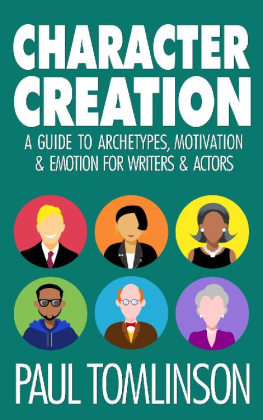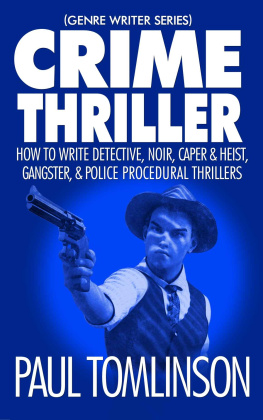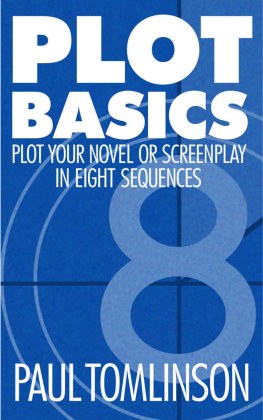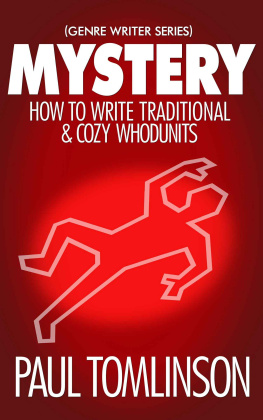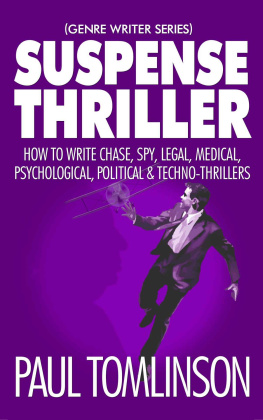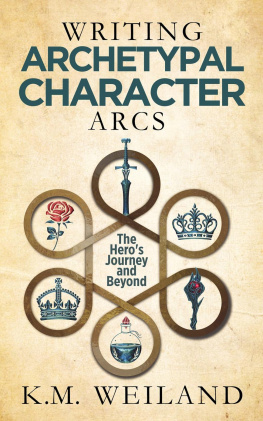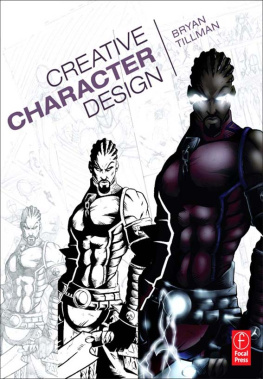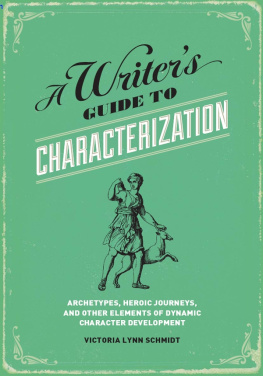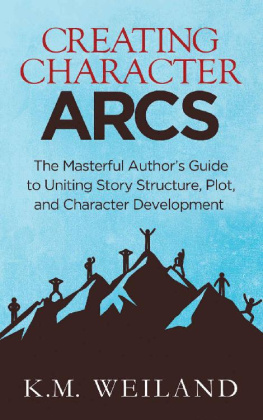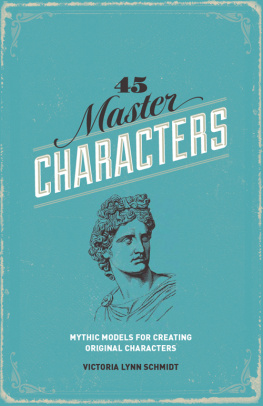Table of Contents
To find out more about this book and the Genre Writer series and to receive additional free writing advice, sign up to the mailing list:
www.paultomlinson.org/signup
Character Creation is Copyright 2018 by Paul Tomlinson
All rights reserved. This book may not be reproduced or transmitted, in whole or in part, or used in any manner whatsoever, without the express permission of the copyright owner, except for the use of brief quotations in the context of a book review.
The content of this book is provided for educational purposes. Every effort has been made to ensure the accuracy of the information presented. However, the information is sold without warranty, either express or implied, and the author shall not be liable for any loss or damage caused directly or indirectly by its use.
First published October 2018
Publisher: Paul Tomlinson
www.paultomlinson.org/how-to
Cover image and design 2018 by Paul Tomlinson
Introduction
Who are the characters whose names you remember long after youve finished reading a book or watching a movie, play or TV series? Story people like Falstaff, The Joker, Blackadder, Sherlock Holmes, Hannibal Lecter, Heathcliff, Willy Loman, Long John Silver, Frasier Crane or Scarlett OHara. Why do we remember these characters and others like them and not others? What is the difference between a vibrant, fully-rounded character the kind that gets Meryl Streep, Jack Nicholson or Dustin Hoffman an Academy Award and a dull, flat one? If you want people to remember your story or your performance, you have got to deliver a colourful larger-than-life character. How do you do that? Thats the question I am going to answer in Character Creation.
What is a Character?
How do we define what a character actually is? What makes each of us a unique person? It has been said, by Aristotle among others, that we are what we do. We are defined by the decisions we make and the actions we take based on those decisions. Our behaviour planned actions and unplanned responses reveal who we are. And those behaviours are at least in part determined by our personalities. This is true for real people and for story people.
Personality, according to the Oxford English Dictionary, is the quality or collection of qualities which makes a person a distinctive individual. The American Psychological Association says that personality refers to individual differences in characteristic patterns of thinking, feeling and behaving. There are a number of theories about personality and different ways of classifying and describing various personality types and I will be drawing on some of these in later chapters to create a simple model for creating different types of fictional character personality. I will also borrow from psychological theories and classifications regarding personality disorders to explore what is often referred to as a character flaw.
Some of the most memorable characters are villains (Hannibal Lecter, Richard III), rogues (Long John Silver, Robin Hood), or flawed heroes (Scarlett OHara, Sherlock Holmes). They probably appeal to us because we know that we ourselves are flawed. Pure, innocent hero types are difficult to portray as interesting characters give me a Han Solo over a Luke Skywalker any day. Each of the character archetypes that well use later has room for character growth, from a negative or flawed version of the character towards a more positive or more integrated version. Character growth involves a change from immoral to more moral (or socially acceptable) behaviour and so is directly related to the theme of a story.
The growth of a hero from a flawed to a more positive state is typically referred to as their transformational journey, throughline, or character development arc and is a gradual change that takes place during the course of the story as a result of their experiences. Not all characters develop some are steadfast or like Shane are a travelling angel who are unchanged by the story but many do. Often characters undergo a sort of redemption, overcoming their flaws and becoming a better or more whole person as a result. Humphrey Bogarts character Rick Blaine in Casablanca is a classic example. In Character Creation, we will explore how to create a flawed hero and their character development arc.
About This Book
Who is This Book For?
As the title suggests, this book is for anyone who creates characters. The techniques and tools it provides can also be used to explore and interpret existing characters by writers who are adapting a character from history, real-life, or another source, or by actors portraying a character in a script. In either case, you can use the framework provided to determine what you have and then use the guidelines to help you fill in any blanks. And if you are really beginning with nothing, there are a few ideas for improvising a new character.
Character Creation is not about how to write or how to act it focuses on the background work necessary to create and/or portray a fully-rounded character. Much of what has been written about character before concentrates on character as a function of plot on the archetypal roles of hero, mentor, confidante, and romantic interest but that is not my subject here, Ive already written about that in PlotBasics. Here I want to examine what makes a character tick what makes a character seem like a real person rather than a chess piece that is being moved around by an author.
There are several great books on character I reference some of them in the text and in the bibliography but as far as I am aware, no book brings together ideas on the psychology of personality, emotion, and motivation with theories of plot structure, theme, and acting in the way that I do here. Because it draws together theories from several disciplines and explores the links between them, this is not a character basics book. It is aimed at those who already have some understanding of character and want to deepen their knowledge. It is a long book because I lacked the ability to write a short one.
What are the Tools & Techniques Offered Here?
Character Creation provides four tools for anyone involved in the creation of fictional characters.
- Six archetypes of character personality the character palette that can be used to define and understand any character. These include the heroic and the darker or villainous sides of each archetype.
- Twelve key elements that make up a fully-rounded story person, including who they are, how they behave, the flaw that causes them to behave that way, and what they need to do to overcome this flaw in order to achieve happiness and success.
- A model character development arc or character spine or throughline which shows the stages a character goes through in their journey to overcome their flaw and become a whole and authentic version of themselves.
- A method for seamlessly weaving together character and plot to create the theme of a story, so that the story is really about something about some important and universal human value a battle between virtue and vice.
In addition, there is practical advice on:
Emotion covering the ten most dramatic human emotions and the situations which cause specific emotional responses, including how to find or create these situations in a plot and compare them to similar situations in your own life. Taking Stanislavskis advice, I focus on how and why an emotion is experienced rather than trying to fake what it looks like.

